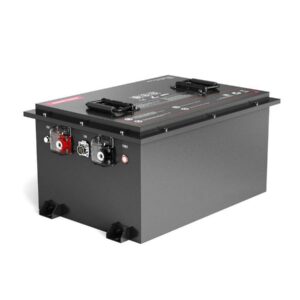
Do you need to jump both batteries in a diesel truck?
Most diesel trucks with dual 12V batteries require jumping both batteries to ensure sufficient cranking power. These batteries are typically connected in parallel (12V total), and jump-starting one may not provide adequate current for the high-compression diesel engine. Always confirm connections using the truck’s designated jump points to avoid damaging the electrical system.
What Is the Best Battery for a Diesel Pickup Truck?
Why do diesel trucks have two batteries?
Diesel engines demand higher cranking power due to compression ratios (18:1 vs. gasoline’s 10:1). Dual 12V batteries in parallel provide double the cold-cranking amps (CCA) for reliable starts in extreme temperatures while maintaining 12V compatibility with accessories.

Modern diesel trucks use parallel battery configurations to balance electrical loads. The starter draws from both batteries simultaneously, reducing strain on individual units. Pro Tip: When testing batteries, check both—a weak battery can drain its partner. For example, a Ford F-250’s dual 800CCA batteries deliver 1600CCA combined, enough to start at -20°C. Always replace batteries in pairs to prevent mismatched aging.
Can you jump-start a diesel with only one battery?
Jumping one battery might work in warm conditions but risks insufficient voltage. Diesel starters require 200-400+ amps; a single battery may sag below 9.6V under load, triggering ECU shutdowns.
Diesel truck electrical systems monitor voltage thresholds rigorously. If voltage drops below 9.6V during cranking (common with a single weak battery), the engine control module may abort startup to protect sensors. Practically speaking, using both batteries ensures voltage stays above 10.5V. For instance, a 6.7L Power Stroke needs 285A at 12V—one battery at 50% charge can’t sustain this without excessive voltage drop. Pro Tip: Use heavy-duty 4-gauge jumper cables to minimize resistance.
| Method | Success Rate (-10°C) | Risk of ECU Errors |
|---|---|---|
| One Battery | 35% | High |
| Both Batteries | 92% | Low |
How to safely jump both batteries?
Connect jumper cables to the designated posts, usually marked red (+) on the passenger-side battery and grounded to the engine block. Avoid direct battery-to-battery connections to prevent alternator surges.
Step-by-step: 1) Attach red clamp to dead truck’s positive jump post. 2) Connect other red clamp to donor vehicle’s positive. 3) Ground black clamp to dead truck’s engine block (not battery). 4) Start donor vehicle, let idle 5 minutes. 5) Attempt start. Why ground to the block? Direct battery grounding can cause sparking near hydrogen gas vents. A Ram 2500’s manual specifies this method to protect the $800 ABS module. Pro Tip: Post-jump, let the diesel idle 20+ minutes to recharge batteries—deep cycles below 12.2V accelerate sulfation.
What if only one battery is dead?
Isolate the failed battery using a multimeter test (below 12.4V = discharged). Disconnect its negative terminal before jump-starting the functional battery alone.
Dual-battery systems often use isolators or solenoid separators. If Battery A tests at 11.8V and Battery B at 12.6V, disconnect Battery A’s ground. Jump Battery B only—this bypasses the dead unit. For example, GM’s Duramax trucks have a $250 battery isolator that automatically decouples a failed battery. However, most mechanics recommend replacing both batteries if one fails—a 3-year-old battery paired with a new one loses 40% lifespan.
| Scenario | Action | Cost Consideration |
|---|---|---|
| One battery dead | Replace both | $400-$600 |
| Both weak | Jump both | Immediate $0 |
Battery Expert Insight
How to Safely Dispose of and Recycle Car Batteries
FAQs
Can you jump a diesel truck with a gasoline vehicle?
Yes, but only if the donor vehicle’s battery/alternator matches the diesel’s CCA needs. Gas trucks typically have 650CCA vs. diesel’s 1000CCA+—let the donor run 10+ minutes before cranking.
Do dual batteries charge simultaneously?
Through a 160-amp alternator, yes. Isolator systems split charging current—expect 45 minutes to recharge both from 50% at idle.
